Women’s Fiction Day
By Therese Walsh | June 8, 2019 |
 Once upon a time, circa 2005 to be exact, an agent suggested that the story I had written wanted to be women’s fiction. I had no real idea what ‘women’s fiction’ meant, and so I set out to learn—and ran into some significant silence. Few articles existed about women’s fiction and fewer were publicly labeled as women’s fiction. But I did find Marsha Moyer, and devoured her novel The Second Coming of Lucy Hatch. I also found Barbara Samuel (now Barbara O’Neal), who wrote many novels, some of which were considered women’s fiction, like The Goddesses of Kitchen Avenue. I reached out to them—both were welcoming and generous—and asked questions. But for every answered question, new issues over this novel-to-me label emerged.
Once upon a time, circa 2005 to be exact, an agent suggested that the story I had written wanted to be women’s fiction. I had no real idea what ‘women’s fiction’ meant, and so I set out to learn—and ran into some significant silence. Few articles existed about women’s fiction and fewer were publicly labeled as women’s fiction. But I did find Marsha Moyer, and devoured her novel The Second Coming of Lucy Hatch. I also found Barbara Samuel (now Barbara O’Neal), who wrote many novels, some of which were considered women’s fiction, like The Goddesses of Kitchen Avenue. I reached out to them—both were welcoming and generous—and asked questions. But for every answered question, new issues over this novel-to-me label emerged.
- ‘Women’s fiction’ was known almost exclusively by those within the industry but not outside of it.
- There was no organization dedicated to ‘women’s fiction’ writers/authors.
- There were no ‘women’s fiction’ shelves at the bookstore.
- Readers generally didn’t know what ‘women’s fiction’ meant. If you asked—and I did—they’d guess it meant (a) any book read by women, (b) a romance novel by another name, or (c) a book featuring a woman, in any genre.
How’s that for non-specific?
Adding to the confusion was this doozy:
- ‘Women’s fiction’ was sometimes used as an umbrella term covering a trinity of romance, ‘chick lit,’ and ‘women’s fiction’ itself.
But ‘women’s fiction’ also seemed distinct, with stories that detailed significant transformations in the lives of women. In fact, transformative personal change was central to women’s fiction; the stories themselves disintegrated without those arcs. That’s why I decided to rewrite my story as women’s fiction, because the vital arc detailed the emotional evolution of a woman. (That novel did sell, but funnily enough was listed as ‘suspense’ in the Random House catalog, which only serves to emphasize the ambiguity and lack of power the women’s fiction label held in 2009.)
Now, in 2019, there have been shifts in awareness about women’s fiction. While there are still no shelves labeled ‘women’s fiction’ in bookstores—you’ll usually find our books in the general fiction section—there are often appropriate digital tags found online. There are many more explainer articles about women’s fiction to be found via Google. There is an award-winning blog, Women’s Fiction Writers, by Amy Nathan, There is also an organization called Women’s Fiction Writers Association (WFWA), which was founded in 2013 and has fast become a goldmine for writers seeking their tribe, pertinent education, and support for their books.
That group is pushing a new initiative, and that is to create a National day of recognition for this rising genre, to help propel awareness to the next level for readers and writers alike. It’s my pleasure to have with us today the co-founder of that organization, fellow author Orly Konig, to talk about women’s fiction—what it is, how it’s evolving, and what comes next.
Thanks for being with us, Orly! What is your impression of how the landscape for the women’s fiction genre has changed in recent years? Is change, if it’s occurring, slow and steady, or happening at a clip? What do you think is behind any change?
Thank you for having me! I think we’re always seeing shifts in the landscape of any genre based on what’s making the sales needle move. For women’s fiction specifically, what I’ve noticed is a maturing for the genre. As awareness has increased, so have expectations and, as a result, the quality of the published works.
Whatever change is happening, it’s not at a clip (does anything in publishing happen at a clip?).
(Good point!) An article published on the Australian Women Writers forum entitled “WTF is ‘women’s fiction’?” subtly suggests that we still have a ways to go within the writing community. Elsewhere, author Rebecca Vnuk wrote, “It’s not even really a genre; it’s a reading interest.” And a Reddit thread published just a year ago had a confused writer wondering if the label was simply a catch-all category. So, first: Do YOU see women’s fiction as its own distinct genre?
I do. I know there are a lot of writers who are anti-label, but for me it speaks more to the audience I’m writing for. That’s not to say men don’t read these books, but if you look at the statistics, buyers are predominantly women.
What has always appealed to me about the women’s fiction genre is that the stories touch on everyday life. The main characters could be our neighbors and friends, and they face the same issues many of us deal with. These stories make us think and feel and question our own decisions. I can only speak for myself, but I find myself gravitating toward books that fill a need at a specific time. Perhaps the somewhat unsettled state of the world at the moment is behind the uptick in books that force us to think about how we react to our place in the world.
What can be done to combat confusion over the women’s fiction label for writers?
The confusion comes from the “soft” definition that the industry has attached to the women’s fiction label. Ask ten industry professionals (agents and editors) how they define it and you’ll probably get eleven variations. Even authors don’t fully agree.
I think the work that WFWA is doing to raise awareness for the genre will, with continued effort, have an impact. Through continued outreach to agents and editors, the association is building relationships and opening the dialogue about what’s considered women’s fiction. The continued growth of the organization is also a sign that writers are searching for resources that are specific to what they write.
Another article entitled “The 17 Most Popular Genres In Fiction” did name women’s fiction, which came in at #15. Yet it is nowhere to be found on this accompanying genre chart. If you were able to play editor, where would you place women’s fiction?
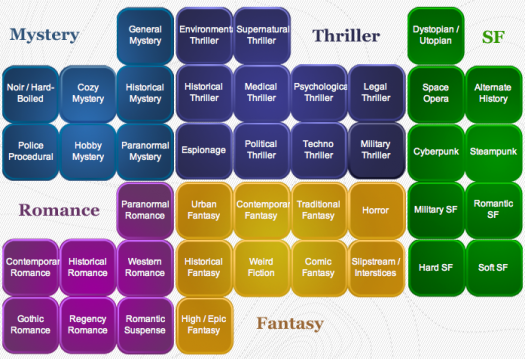
The chart, interestingly enough, misses a number of genres that don’t fit within the five categories they chose, so I’m not surprised at all that women’s fiction is missing. If I could play editor to this chart, I’d include an orange category (because I like orange) that would include literary fiction, historical fiction, women’s fiction, magical realism, memoir, young adult, middle grade, picture books, graphic novels, and I’m sure others I can’t think of at the moment.

Has WFWA’s definition of women’s fiction changed at all since its inception? What is it?
WFWA defines women’s fiction as “layered stories in which the plot is driven by the main character’s emotional journey. The driving force of women’s fiction is the protagonist’s journey toward a more fulfilled self.”
The founding board spent a long (long) time agonizing over the definition and each year (at least once a year) we end up having another hefty discussion over the definition. Despite how heated those discussions have gotten, the definition hasn’t changed, although it has evolved to be more inclusive based on the books we’re seeing making a mark on the genre.
What complicates the definition is that women’s fiction isn’t a straight-forward genre. It can contain elements of romance, mystery, magical realism; it can be historical or contemporary.
Do you feel we’ve made any headway toward public awareness for the genre?
I have seen more readers begin to adopt the women’s fiction label, although it’s mainly in the various Facebook groups that bring readers and authors together. Many of those readers are very active as reviewers and on various social media platforms.
I still find myself having to explain it to people I meet though. It’s not a label they’re familiar with from bookstores. It is, however, a search option when looking for books via online vendors. However, until there’s more standardization in what’s labeled as women’s fiction, I suspect we’ll continue to see confusion by readers.
Tell us about Women’s Fiction Day. What is it, and why has WFWA decided to push this initiative?
Women’s Fiction Day celebrates the diverse authors, stories, and readers of this multi-faceted genre. As an organization, we want to uplift authors, promote literacy, and expand the appeal for stories that explore humanity.
Studies have shown that reading fiction makes us more empathetic as we connect with characters and experience new worlds. Women’s Fiction, whether it is contemporary, historic, romantic, or mystery to name a few types, tends to be multi-layered in settings, social issues, and internal struggles. This genre offers something for every reader’s taste.
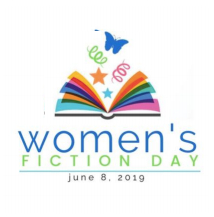 The Women’s Fiction Day logo represents the joy of reading and the variety of stories and diversity in its authors and readers. We picked June 8th as our day as it ties into summer reading, longer days, and free time.
The Women’s Fiction Day logo represents the joy of reading and the variety of stories and diversity in its authors and readers. We picked June 8th as our day as it ties into summer reading, longer days, and free time.
As a leading voice in the Women’s Fiction community, WFWA wants to expand the reach of these important stories and empower the voices of our authors. What better way than with a celebration of story?
What can we do to help secure Women’s Fiction Day for future authors and readers?
The more we promote the titles that fall under the women’s fiction umbrella as “women’s fiction,” the higher the awareness. The more momentum we can build, the easier it will be to embrace the label and spread the word.
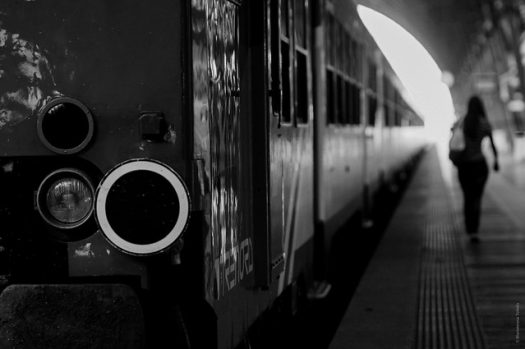
If you were to change three things in order to impact the landscape for this genre, what would they be? Where do you see women’s fiction going from here?
Oh wow, that’s a tough one. I would love to see a more cohesive definition that we can all rally behind. The WFWA board is actively working on this and, though it’s a slow process, we’re seeing progress. A key goal for WFWA, one that is guiding many of our conversations, is to have industry professionals recognize women’s fiction as its own genre, especially in Publisher’s Marketplace. This is one of the objectives behind launching Women’s Fiction Day.
Genres are important to help the publishing industry slot and market books effectively, and for readers to find their interests. It would be great to see women’s fiction become a universally accepted label that makes finding our books easier.
Finally, our hope is that conversations around women’s fiction will become mainstream, so that authors, agents, editors, and readers will no longer have to explain the genre, but can rather talk about these great books.
I suspect that women’s fiction will continue to thrive as a genre. We’ll continue to see shifts in the tone of the books and the issues they address, but life and its complications will always be relevant.
Thank you, Orly! Readers, what does women’s fiction mean to you? Share your favorite books in comments. And please help us to spread the word about Women’s Fiction Day over social media (#womensfictionday).

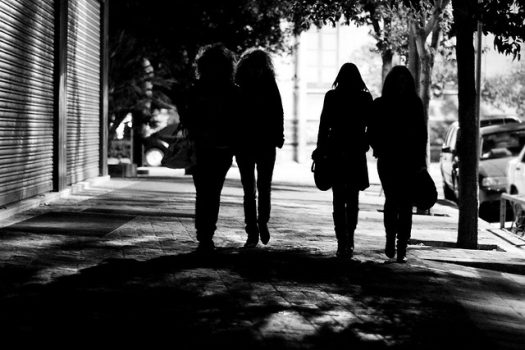
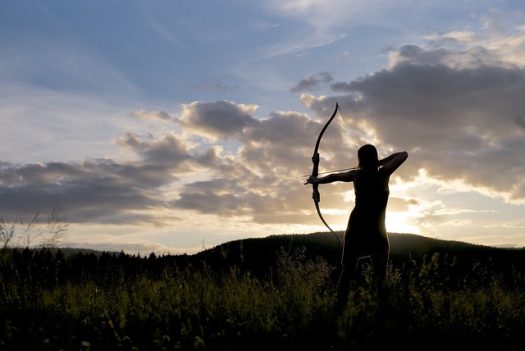
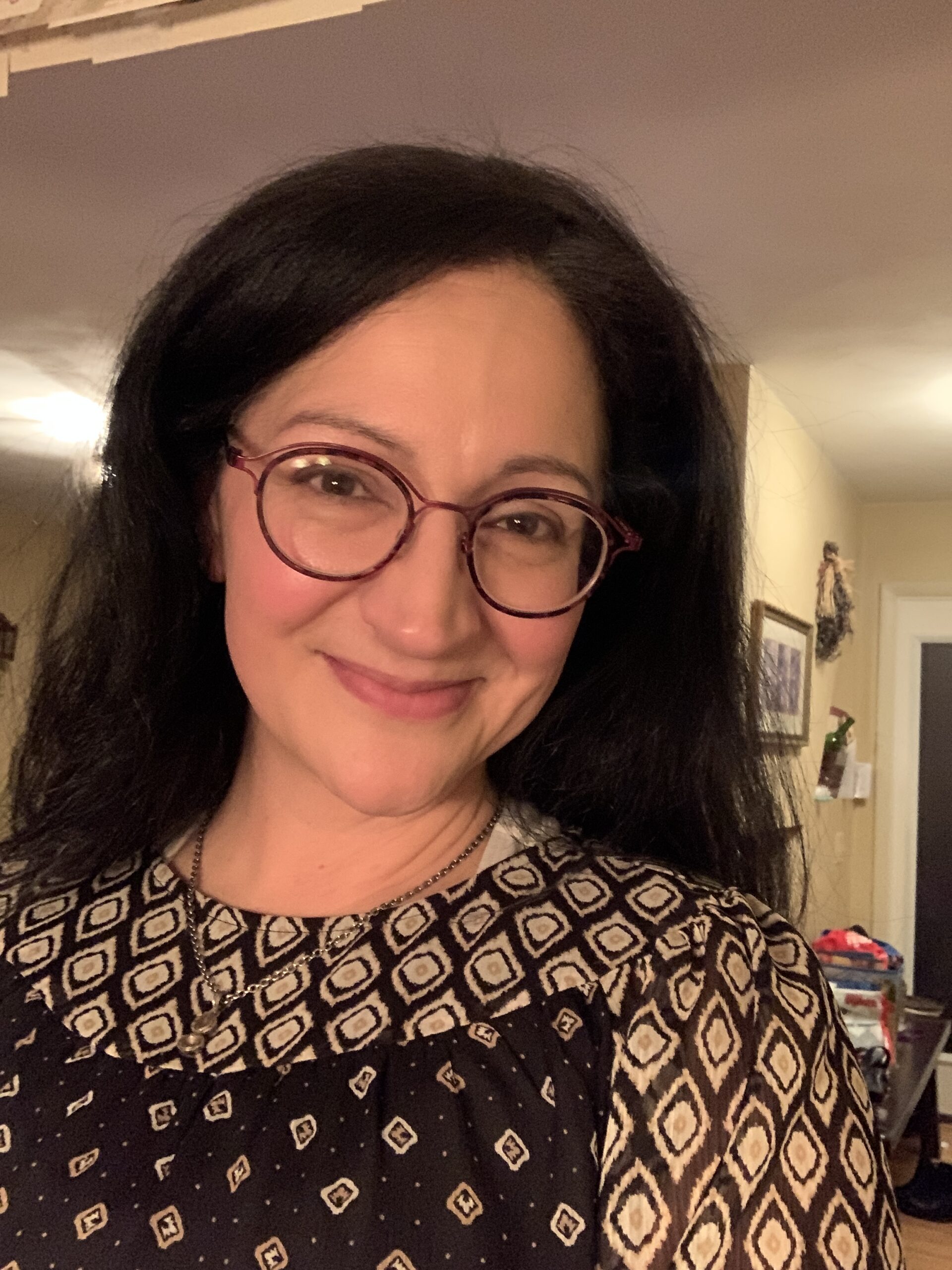








Oh, I love this post!! I am a member of WFWA and may actually be a charter member because I tried to pay dues before the organization was ready to accept them. I joined because of the focus first and foremost on women. Our work, regardless of genre, still does not seem to garner the respect and recognition it deserves among the industry “gods” and WFWA is working hard to change that. Even if one does not write what would strictly fit the association’s definition, it is still a great place to be as a female author. I found one of my critique partners there and we have formed a terrific bond even though we live on different sides of the globe! I’m waving at you, Michele! My writing tends toward historical suspense with romantic and women’s fiction elements. How’s that for blending and bending genres? Anyway, I just want to say thank you to the WFWA founders. It is a terrific organization!
The WF label has never bothered me, obviously! I intentionally write stories that will appeal to women, I am a woman — I don’t see the problem, nor do I feel marginalized.
Go WF! Thanks Orly and Therese!
And then there’s this, published just 4 days ago.. It’s clearly an issue unique to women writers. “…if we pay attention to how we talk about female writers and their work, we can let go of the idea that “stupid” wears lipstick and “smart” has a beard.” https://bit.ly/2I1nIZP
Fight on.
I clearly recall the first time I encountered the name Women’s Fiction in reference to a genre, a little over a decade ago. I was a fairly new writer, and I’d been reading a blog that was new to me. But the more I read, the more drawn-in and connected I felt to the writing community. One of the regular contributors seemed particularly wise, inclusive, and supportive. I gleaned she’d recently published a book, so I clicked through to her website to check it out.
I have to admit, the name Women’s Fiction caught me off guard. For just a moment, I thought, “oh, this book is not meant for me.” But I’d already read the blurb and felt drawn to it, so that thought was quickly replaced by, “screw that, I’m ordering it.” Thank goodness. The book is among my all-time favorites, and the author has become a north star for my writing journey. I’ve read many others in the genre since, and have come to consider seeing the tag as a plus–a story I’m more likely to connect with rather than less.
That original site? This one, of course. And the book? The Last Will of Moira Leahy, by Therese Walsh.
Happy Women’s Fiction Day, Orly and T!
Thanks, V! I personally wish the genre had a different name, in part due to what you’ve described; the label gives men pause, and even turns them away from our books. But the name is rooted, and so our best course is education. Speak on, friend; your y-chromosome voice can only help to educate the masses.
As one of the first members of WFWA, the organization allowed me to exchange ideas with other writers and to have a place where companionship also provided encouragement. We writers when working are solitary. Being able to come together to share highs and lows and perfect our craft has been a welcome starting point. But now WFWA helps define a literary movement and genre. Exciting, purposeful and so helpful. I celebrate the progress and smile when established writers want to join us. So yes much to celebrate today!!
Agreed. WFWA has built a solid platform, and it grows stronger by the year.
I write OtherWorld fantasy with romance, suspense, adventure, and a dash of steampunk to it. In my heart, though, it’s women’s fiction. I say that because, even though I adore the idea of fantasy, I read more women’s fiction. My focus is on fantasy novels with more compassion and fulfillment and far less warfare.
Writers like Sonja Yoerg, Cathy Lamb, Barbara O’Neal, and Glendy Vandcrah are dear to me.
While Bk1 is an overture for the world and contains romance and suspense, it’s also about the unique problems a woman faces in Carrdia (or any other world), including empowering herself. Bk2 is, more than anything, about female friendship.
I’d tired of fantasy where women were cardboard or nonexistent (I’m looking at you, Grandpa Tolkien). The other version was too often the emotionless, “kickass” woman I couldn’t relate to. Femininity is kickass and I’d had enough of fantasy books that subtly told me I should be ashamed of it.
Thank you so much for sharing this, Therese. I wasn’t aware of WFWA, nor could I have defined women’s fiction (I’d given up, opting to enjoy it instead). Writing what I do, I couldn’t imagine myself included among writers such as those I named above.
Christina, I’m glad the post has been illuminating for you. One of the great things about WF is also one of its challenges : It ‘marries’ very well with other genres. Welcome to the WF family!
I’d so love to be a part of the WF family and have spent half the morning at the site. One of my questions was whether there was a place for me there as a fantasy writer. I have this vision that marries WF and fantasy. I see the journey that most matters being the emotional one where compassion rules magic and replaces mind-numbing epic battles. I guess you’ve answered that. Thank you.
I hope you’ve read Juliet Marillier’s novels. I’ve always thought Juliet’s books a perfect example of WF/fantasy. (See Daughter of the Forest, to start.)
I’ve read them, and loved them. Thanks!
Hi Orly!
I’ve thrown into the ring my own (broader) definition of Women’s Fiction for consideration. I hope it gets kicked around with the others at WFWA.
I do believe that a clear genre designation will help promote fiction written by and focused on women. Sign me up for Women’s Fiction Day! But I think the definition probably should precede the celebration.
I understand the resistance to a label. “Another box to keep women contained? No thank you.” Yet why? Organizations, awards and special days of recognition have promoted all kinds of professions and groups. Should Gay Pride Day be abolished because it stuffs LGBTQ people into a category? Is a label a straightjacket? I don’t think so. Recognition is power.
So carry on, Orly! And thanks, Therese. So nice to hear your voice on the amazing platform you’ve created, too: WU.
Don, I’d love to hear your definition, if you’re willing to share it. (You might recall our efforts and struggles, circa-2009, when RWA-WF was established. Our board spent a great deal of time trying to settle on a definition, but no one was ever 100% satisfied with it.)
The challenge is to categorize so the appropriate readers can find the book they are seeking on the shelf – physical or digital. How can this be done? Are there shelves in “stores” for Women’s Fiction? If the story is also psychological and even suspenseful then what shelf is it. This is handled pretty well by Goodreads tags. But what about shopping on line or in the brick and mortar bookstore?
That’s a tough one and I’m not sure the brick-and-mortar stores can do much more than the general categories with the limited space and the fact that so most books fall under various categories. From my experience, sellers are a great resource to help point you in the right direction.
For me, part of the fun of brick-mortar stores though, is the browsing. I’ve stumbled across plenty of books that I otherwise wouldn’t have picked up just from looking at the general fiction shelves or the new release table.
“Recognition is power” … yes!!!
The WFWA board goes through that definition exercise every few months and still isn’t set that we’ve fully captured it. We’re actually in the middle of surveying agents and editors to get their feedback with the hope that we can get better insight.
A wonderfully comprehensive post, and long overdue! It’s an evolving and dicey subject. Although I write what I describe as “upmarket women’s fiction,” which helps people to accurately place my work, there’s a part of me that’s uncomfortable with labels that divide us by gender, race, age, or any other category. That seems especially true at a time when gender roles, depictions, and definitions are becoming far more fluid. If the culture as a whole is moving away from binary perspectives, why would we want to embrace them? (Is there “men’s fiction?”) Like I said, dicey and complex. BTW: Jane Friedman had an interesting interview recently with Bill Wolfe who is a man writing about women’s fiction. “Women’s fiction” ain’t just for women!
I feel you, Barbara; it is complex, and dicey.
Nearly included the debate — and there is one — about whether men ‘should’ be authoring women’s fiction. Interesting arguments when you dig in there, though one of our own (hey, Keith Cronin) has been vocal about writing the genre as a man, and I’ve always appreciated his perspective (and Me, Again sits on my keeper shelf, whatever you call it).
Thanks, Therese, for shedding some light on the subject. I work at Barnes and Noble, and although we shelf most genres under the fiction category (with the exceptions of romance, sci-fi, and mystery) there are secondary categories for each book, one of which is women’s fiction. It’s been my experience that many women readers are familiar with that name/category.
I’ve hesitated to categorize my work as women’s fiction because it seems many people, in the industry and outside of it, equate it with chick-lit. I have nothing against chick-lit (I read it myself), but that is not what I write. It’s a relief to finally have a definition.
Thanks, Orly and WFWA, for your dedication to defining and uplifting the genre.
Dawne, that’s great to hear about B&N. Our local chapter doesn’t display any such signs, but perhaps things are changing nationally. (As an aside, I wonder what the sale of B&N will bring! Hopefully a return to a wholehearted focus on books.)
We don’t display signs, but when we look them up on our database they’re listed as women’s fiction.
I am cautiously excited about the sale. A new hope…
Yes, lots of hope.
I love hearing that readers are becoming familiar with the label.
Love this post! WFWA, where do I sign up?
Hi Judith. I’ve been spending time at the site this morning, and while as a fantasy writer I’m not sure I’m what they want, I adore the organization. The site’s link is:
https://wfwa.memberclicks.net
Fabulous post, Therese & Orly!!
Many thanks to you both for all you’ve done to forward Women’s Fiction ;) . xox
Thank you, too, Marilyn! It’s been a long and winding road, yes?
Great post ladies, and thanks for all of your trailblazing efforts! Interesting to hear about your 2005 history with your novel Therese. I had always intuitively written in this lane, and now I suppose it was pre-label. In 2002, when I went to the Sewanee Writers’ Conference, I’ll never forget the way a guy in my workshop group (a fellow there to mentor us, no less) said oh-so-dismissively, “What is this, some kind of chick book?” Granted, it was my first novel and I had things to learn, but somehow the notion that a woman’s transformative journey could anchor a novel was unknown to him. Glad WF has a way to continue to exert its influence, because it’s the only kind of story I have any interest in telling.
I wonder what that guy considered a keeper book? Hmm… Love your stories, Kathryn. Write on!
Thank you for this post. You’re right that there’s a lot of confusion around the term.
The novels I most enjoy (and write) fit the WFWA definition above: “layered stories in which the plot is driven by the main character’s emotional journey. The driving force of women’s fiction is the protagonist’s journey toward a more fulfilled self.” My problem with the genre name is that some of the novels I love that fit this definition have male protagonists and some have female protagonists.
Must the protagonist be female for a novel to be women’s fiction? Or do we identify it as women’s fiction because only women are expected to read it? Is every novel where the protagonist’s emotional journey drives the plot women’s fiction? Does women’s fiction have to have a happy ending?
I do recognise the difficulty of coming up with a good definition. However, I’m not sure what “fulfilled” means here. In a good novel, even if the protagonist doesn’t succeed, the growth she or he experiences would be fulfilling, wouldn’t it? I tend to think of the novels I enjoy (and write) as a journey toward a more authentic self, i.e., discovering who you are, what you believe in, what you are capable of (good and bad), etc.
I’m not trying to be contrary. I’m just still hazy about the perimeters of this genre.
All great points, Barbara.
I’ll try to answer as best as I can. :-)
First, the WFWA board debated the main character as female or not issue quite a bit. We tweaked the definition to “main character” when it became clear that several books we considered women’s fiction had male main characters (see Barbara Claypole White’s books). That’s still a contested point among many folks though.
Do all novels where the main character’s emotional journey/growth drives the plot fall under women’s fiction? I would argue no. If the book is driven by external forces – finding out who the killer is, getting the guy/gal to fall in love with you, etc. – then those books would still fall under the suspense/thriller or romance heading even though the characters may go through a growth arc.
And no to the happy ending. A lot of WF has a hopeful ending but I’ve also read a few that were gut wrenching and amazing.
Thanks, Orly! That’s helpful.
I love this post because I went through the same struggle with categorizing my novel, The Sleeping Serpent – a woman’s struggle to break an obsessive bond with her yoga master. I often added psychological into the word mix when I submitted a query letter. The protagonist is a woman who falls prey to a charismatic yoga guru who she later finds out is a narcissistic abuser. She undergoes a “transformative personal change” what you call the vital arc that shows the emotional evolution of a woman. Amazon has placed my book in the Kindle and Paperback editions under similar but slightly different categories that range from: Women’s Psychological Fiction (perfect) Psychological Fiction (OK) and Psychological Thriller (there is some violent abuse). At times they used Suspense, too. They have continued to tweak it. I tried to get a traditional publisher but it was before Big Little Lies! But the trend now after the MeToo Movement is great! I will be looking to do more promotion with the release of the sequel.